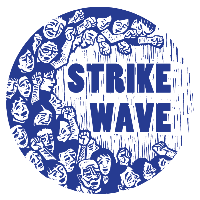OPINION: Let educators decide when it’s safe to reopen schools
by C.M. Lewis
Source: ABC News
It didn’t take long for the veneration of American educators in the early days of the pandemic to turn into public resentment and backlash—and it’s spreading.
An increasing number of pundits—including progressives like Chris Hayes—have recently argued that it’s time to reopen schools for face to face instruction. The renewed push is based largely on conclusions advanced in an article in The Atlantic by economist Emily Oster, suggesting schools aren’t super spreaders the way many thought they would be.
Oster’s conclusions are debatable. She doesn’t differentiate between incidence rates at schools with stringent safety protocols, and schools without them, before concluding that “schools aren’t super spreaders” and that fears were “overblown.” The dataset she draws from relies on voluntary reporting, with widely varying participation from state to state. Self-reporting skews the dataset; Districts likely to self-report are Districts more likely to take safety measures seriously. Moreover, the dashboard project she cites shows steady increases in staff cases over the past month, reflecting a national surge in COVID-19 cases. It also shows sharp differences between case rates for schools with masking, and schools without it—a daily case rate of 29 staff cases per 100,000, versus 79 staff cases per 100,000.
There’s good reason to believe there are schools that can provide relatively safe face-to-face instruction, but rushing to declare it safe to reopen based on snap judgments from early (and misinterpreted) data is—at best—misguided, and at worst, knowingly shoves educators under a speeding bus. Oster and pundits clamoring to reopen schools often miss the important context offered by their own data and emphasized by epidemiologist Dr. David Rubin in an interview with the New York Times—that face to face instruction can be safe “in the presence of strong safety plans.” In short, saying “schools aren’t super spreaders,” full stop, is dead wrong—they first need to meet safety requirements.
Not all Districts can do that. Pennsylvania has one of the widest gaps in per-student investment between the richest and poorest schools; wealthier, better resourced schools with smaller class sizes are better positioned to meet necessary safety protocols like social distancing, mask provisions, and technology infrastructure for transitions to remote learning. Chicago teachers and Los Angeles teachers recently struck over classes with over thirty students, raising the question whether it’s even possible to socially distance with abysmal staff-to-student ratios. Like with most aspects of the pandemic, the question of safety exposes the looming gap between the “haves” and the “have nots,” especially in education.
Missing from the chorus of calls to reopen schools? Unions. Florida Education Association President Andrew Spar pushed back in an interview with ABC News, noting that there could be gaps between what’s happening and what’s getting reported. Education unions have been at the forefront of ensuring school safety, including a recent sickout in Houston to demand better COVID-19 protocols. Since schools began reopening in August, education unions have been clear: we want to go back, and we’ll go back when it’s safe for our students and for us. They’ve taken enormous risks—like sickouts—to ensure that classrooms are safe for students. As thanks, well-heeled pundits tired of watching their kids are asking “Why aren’t they back already?”
There’s no doubt, of course, that there are problems created by remote instruction and school closures. No teacher will say remote instruction matches in-person learning. It also creates enormous difficulties for working parents (including teachers that are parents) who lack the flexibility to work from home, and many students in poverty rely on services (counseling, meals) provided by schools. The pandemic has brought home the centrality of schools in our communities, and what they offer—something that should drive home the need for increased funding and better pay for teachers.
But there’s a clear answer for those that want schools to reopen: demand they have the resources they need to do it safely, support teachers and education support staff, and hold administrators accountable for health and safety plans that protect students and staff. Teachers don’t decide whether schools reopen safely—management does. Education workers can only use what leverage they have to force management to do the right thing, and they need public support.
People like Emily Oster won’t suffer for having schools closed; for them, it’s an irritation or an inconvenience they want teachers and education workers to take off their hands. Forcing a hasty reopening based slapdash analysis is off the mark, and it’s another example of pundits telling educators how to run education. Instead, we should listen to the people that actually work in schools, and who are often telling us when it is or isn’t safe to return. Schools need to reopen as soon as they can do it safely—and the best way that we can ensure that is to support teachers instead of scapegoating them.
C.M. Lewis is an editor of Strikewave and a union activist in Pennsylvania.

